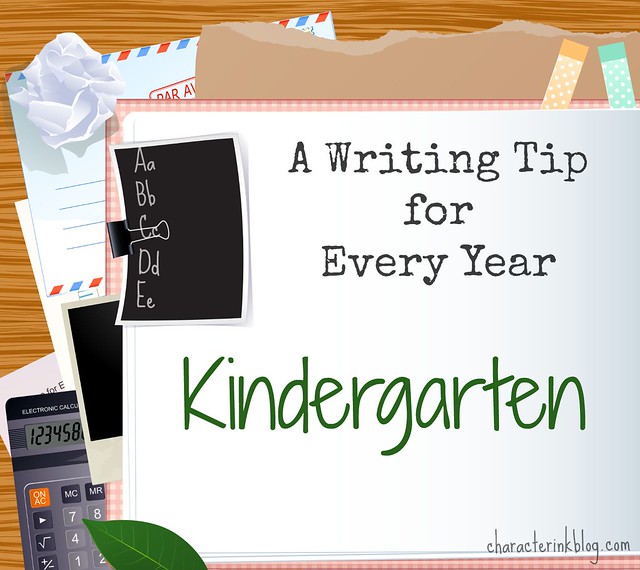I have loved teaching writing and language arts to nearly a hundred students a year for the past fifteen years (started out with eight students!). Through that process, as well as through writing fifty thousand pages of curricula, books, blog posts, and more over the past fifteen years, I have learned so much about teaching writing—and also about the expectations and goals that we have for students at various levels. Sometimes these expectations are extreme, but sometimes they are not adequate. In this series, I hope to give you an *encouraging* writing tip for each grade level. Keep in mind that I am talking here about the act of writing/creating/composing, not the act of penmanship (or even spelling). Here we go…
Kindergarten:
Teach “writing” informally through reading aloud, listening to audios together, and building the child’s background of experience.
At this level, the child may not be able to “pen” words or sentences (my kids certainly couldn’t), but writing is about creating and creativity and thinking first and foremost. The penning will come later—and its success will be based on the level of creativity and thinking that a child has developed.
Every time you read aloud to a child, you are building his creativity. Every time you listen to an audio together, you are teaching him to “make pictures in his head” (my six year old’s words fifteen years ago!). Every time you discuss things, go to the zoo, visit a re-enactment, or watch the creatures at the aquarium, you are building his background of experience.
These books, pictures in his mind, and experiences will all be brought together—first in his learning to read (his reading comprehension following “word calling”) and then in his learning to write. When I was in college, these were called “background of experiences.” Regardless of what they are called, some things never change: a student thinks and learns based in large part on those.
Taking his experiences one step further through discussion seals his learning and thinking. Use the same good questioning techniques with experiences as you would with building reading and listening comprehension: ask why, ask what makes him think this or that, ask what that is similar to or different from, ask what might happen next or what might have happened before.
Writing is not only taught with paper and pen (or computer). Don’t underestimate the non-writing “writing lessons”!




